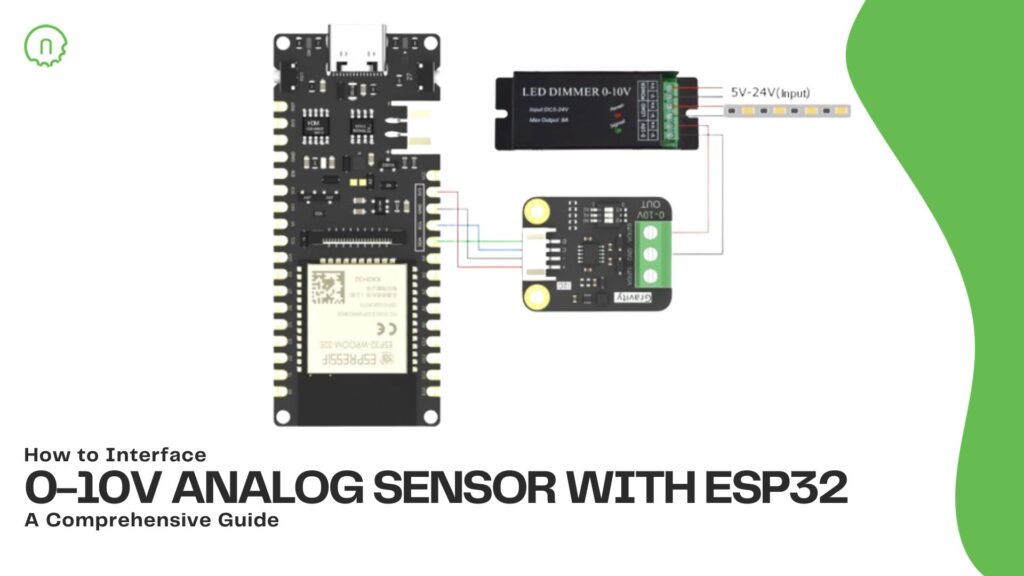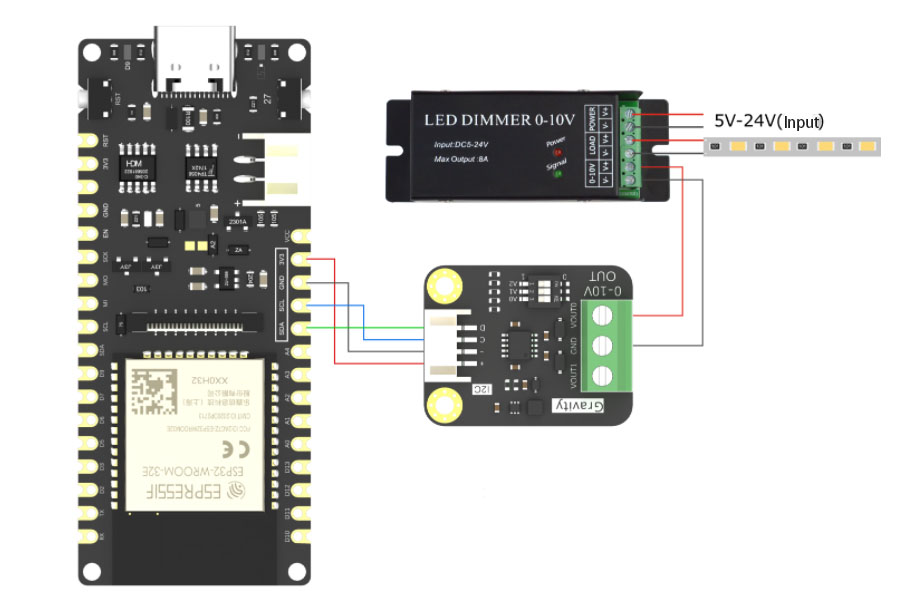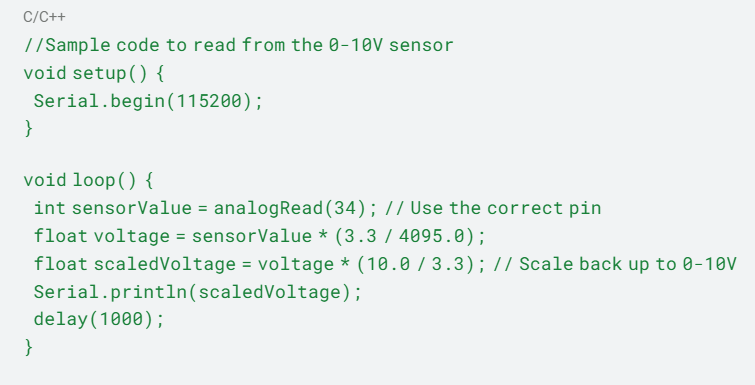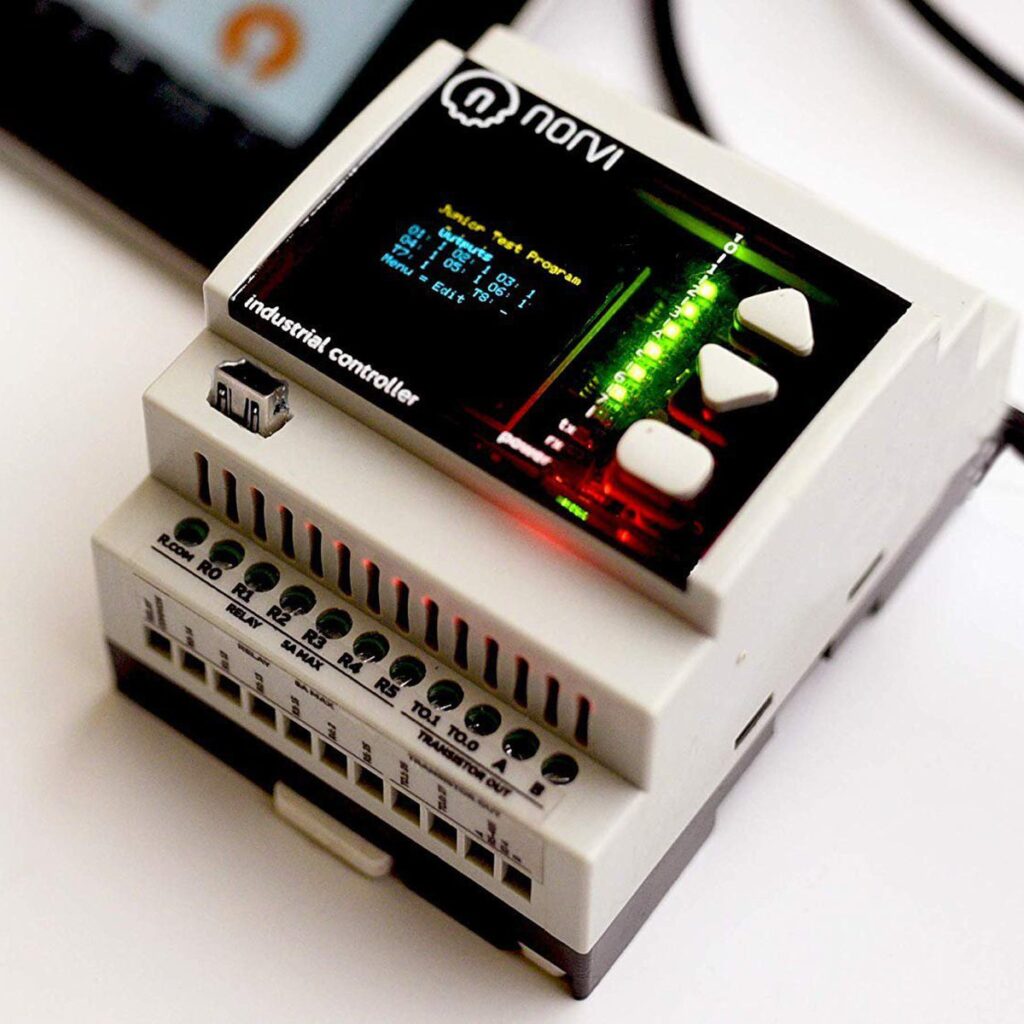
In the realm of industrial automation and control systems, interfacing a 0-10V Analog Sensor with ESP32 microcontroller is an essential requirement of systems. This requires attenuating 0 – 10V Analog signal to acceptable levels of microcontroller level ADC, in cases where higher accuracy is required, 16bit ADC of ADS1115 can be used.
Why 0-10V Analog Sensor with ESP32

If you’ve wanted a 0-10V Analog Sensor with ESP32. It is needed to follow the steps outlined in this article and be able to successfully connect the 0-10V analog sensor to the ESP32. After uploading the code and testing the setup, it was able to accurately measure the values and take action for transmit. This practical application not only helped to understand the process better but also highlighted the importance of using analog sensors with microcontrollers for real-world projects.
It’s a given that 0-10V industrial sensors are the stalwarts of the sensor family. Robust, reliable, and remarkably versatile, these sensors have been the backbone of industrial sensing for decades. Pairing them with the ESP32, a powerhouse in its own right with WiFi and Bluetooth capabilities, opens up possibilities that would make even the most seasoned engineer’s heart race.
Components Required
If you’re going to build a 0-10V Analog Sensor with ESP32, for that, You’ll need your trusty ESP32 board, a 0-10V analog sensor, a voltage divider or a level shifter (because ESP32 can’t handle 10V directly on its pins), and the usual suspects: resistors, breadboard, jumper wires, and a power supply. Quality components make for a quality project, so don’t skimp.
Circuit Diagram
Here’s where things get interesting. The ESP32 is capable but sensitive; its analog inputs can only tolerate up to 3.3V. So, we’ll need a voltage divider to step down the 0-10V signal to a more ESP32-friendly level. It has to remember the first time that a pin blew out by being overzealous with voltage.
Code
Coding for the ESP32 is a delightful challenge. You’ll need to calibrate your code to account for the voltage divider’s scaling. The ESP32 uses a 12-bit analog-to-digital converter, giving us values from 0 to 4095 for 0-3.3V, which we’ll map back to 0-10V. I’ve coded in various settings, but the exhilaration of seeing your code compile and run correctly never gets old.

Testing the 0-10V Analog Sensor with ESP32
Now comes the moment of truth, testing. Here, every connection, every line of code, and every calibration is put to the test. It’s more than just making sure things work; it’s about precision, it’s about reliability—it’s about the perfect interplay between hardware and software.
Uploading the Code
Uploading the code to the ESP32 is as straightforward as it is nerve-wracking. The anticipation builds with each progress bar increment. If all goes well, you’ll be greeted with a series of values in your serial monitor that reflect the real-world parameters your sensor is detecting.
Output
Watching the serial monitor tick off numbers as your sensor reacts to the environment is akin to a maestro conducting an orchestra. Each value is a note, each fluctuation a harmony. It’s not just numbers; it’s a symphony of data telling you a story of the physical world around you.
Insider Tip: Always monitor your sensor’s output before deploying it in the field. It’s the difference between a well-tuned instrument and a cacophony.
Conclusion
Interfacing a 0-10V Analog Sensor with ESP32 is a task that epitomizes the fusion of old-school robustness with cutting-edge technology. It’s a testament to an engineer’s ability to adapt, innovate, and overcome the challenges of a constantly evolving field. Go forth, interface with confidence, and may your sensors always read true.

NORVI IIOT series offers 0 – 10V compatible Analog Inputs, where you can get rid of the external attenuation networks and it has a 16 bit ADC resolution with higher accuracy. This makes ESP32 Applicable in industrial 0 – 10V measurement applications.
So, if you need 0-10V Analog Sensor with ESP32, NORVI is the best solution.
Visit Now: https://norvi.lk/norvi-iiot-industrial-iot-node-esp/

